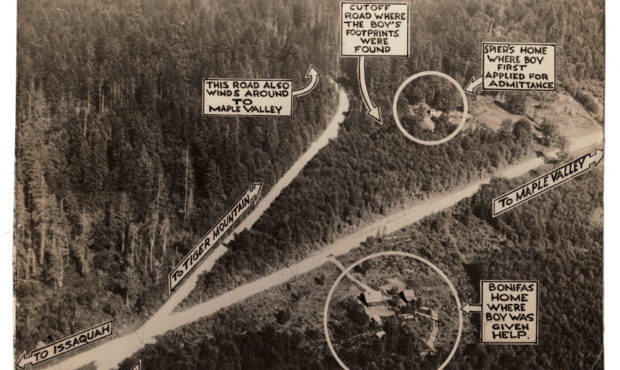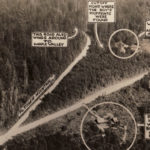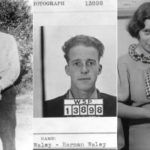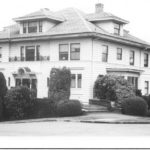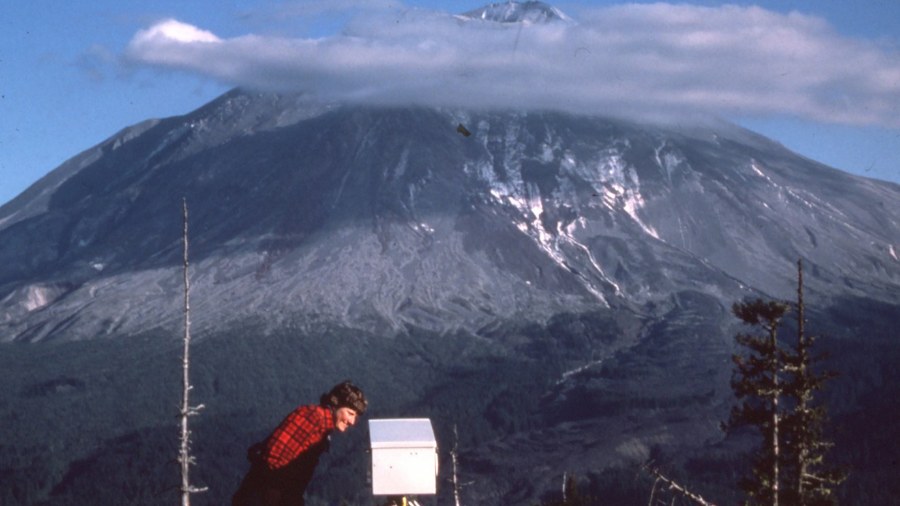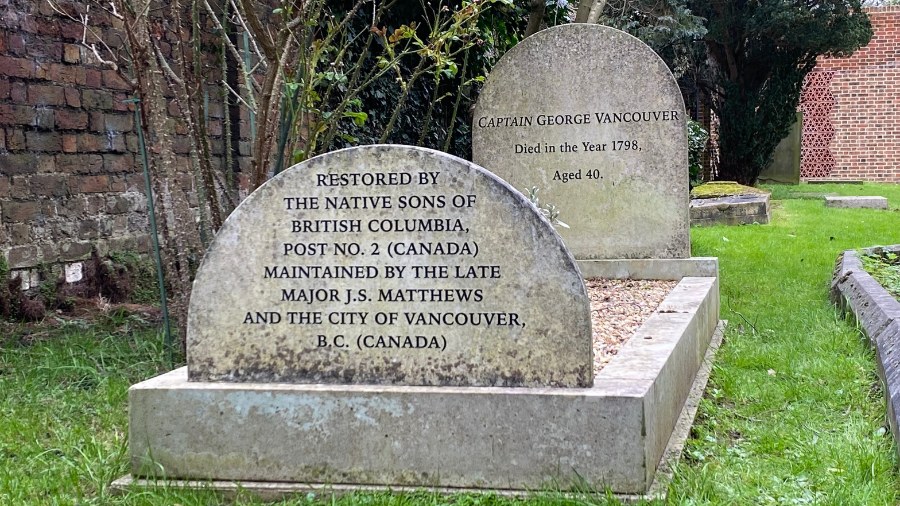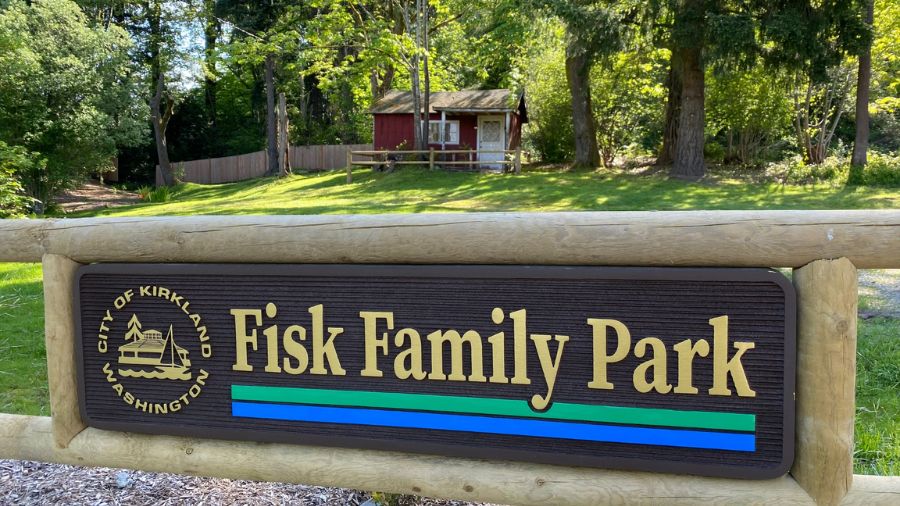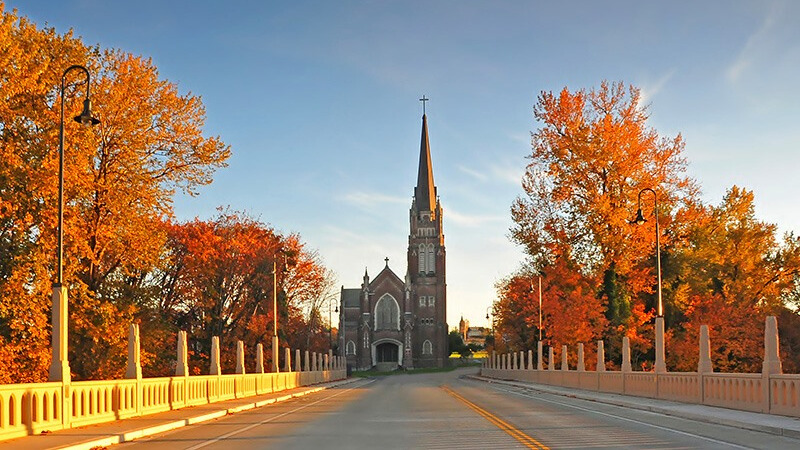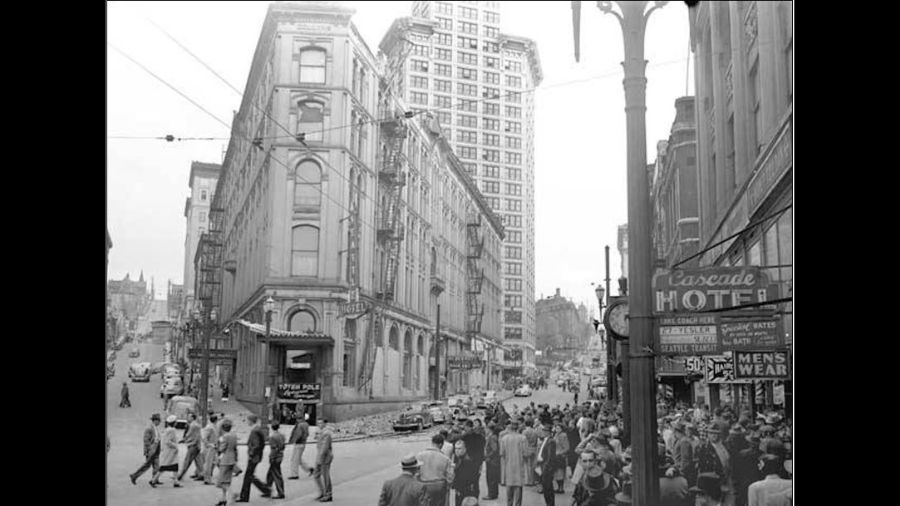Dramatic 1935 Weyerhaeuser kidnapping comes to life in new book
Sep 8, 2021, 9:55 AM | Updated: 11:10 am
The company and family that bear the “Weyerhaeuser” name have been prominent in the Northwest for well over a century. And now, the long-ago kidnapping of a young member of the timber dynasty has inspired a new book.
It was back in 1935 when little 9-year-old George Weyerhaeuser – whose great-grandfather founded the company – was snatched by kidnappers on his way home from school in Tacoma one May afternoon. This was not long after the infamous Lindbergh Baby kidnapping in New Jersey. It was also in the middle of an era of high-profile bank robbers and other criminals – along with the rise of the FBI, which J. Edgar Hoover was in the process of creating in 1935 from the predecessor agency he’d taken over a decade earlier.
The fact that the Weyerhaeuser kidnapping happened in the Pacific Northwest is not a secret – the FBI has a webpage devoted to it, it comes up in magazine and newspaper articles every now and then, and it’s listed in any decent Northwest history timeline. But local author Bryan Johnston has written the first-ever full-length book about the crime, which frightened the prominent family and captured the attention of newspapers and radio around the United States for much of the late spring of 1935.
Johnston’s book is called Deep In The Woods – and he certainly went deep into federal documents and court transcripts, and he even managed to snag an exceedingly rare interview with someone very close to the case.
Bryan Johnston told KIRO Radio that when it comes to the characters involved and the narrative itself, the research he undertook did not disappoint.
“The thing plays out like a Hollywood movie,” Johnston said. “I mean, half the stuff in here I couldn’t make up if I tried it. When I was researching this book, I would constantly be running upstairs to my wife and saying, ‘You cannot believe what I just learned about the story.’ It was just golden nugget after golden nugget. It was remarkable.”
George’s great-grandfather is Frederick Weyerhaeuser. He started the Weyerhaeuser forest products dynasty in 1900, and Bryan Johnston says the elder Weyerhaeuser is still considered the 12th richest man in American history, as in ever. For comparison, says Johnston, another local guy – Bill Gates – is on the same list at number 11.
Thus, little George Weyerhaeuser was a natural target for a kidnap and ransom scheme in the middle of the Great Depression.
It was around noon on May 25, 1935, when George left Tacoma’s Lowell School on foot and headed to meet his sister outside the Annie Wright School for their chauffeured ride home. He never showed up. When he still hadn’t come home by early afternoon, his parents – John and Helen Weyerhaeuser – called the police.
Around 6:30 p.m., a special delivery letter – mailed anonymously and containing a ransom note – arrived at the Weyerhaeuser home. In an old newsreel, the narrator describes what happened next.
“This ransom letter was turned over to the FBI. Nine-year old George Weyerhaeuser, kidnapped,” the narrator says, in classic melodramatic newsreel fashion. “They made him sign the back of the envelope as identification to his parents. The G-Men made a searching study of this elaborate kidnap message. It gave a list of the size of the bills to be paid in the ransom money: $200,000.”
The $200,000 demand is pretty audacious, says Bryan Johnston, as it’s four times what the Lindbergh kidnapper had demanded just two years earlier. Adjusted for inflation, the Weyerhaeuser ransom would be close to $4 million in 2021.
Randomly, $200,000 is also the same dollar amount as what infamous Northwest hijacker D.B. Cooper would demand – and be given – in exchange for his hostages more than 30 years later.
Even though young George’s dad was John Phillip Weyerhaeuser, Jr., he didn’t have that much cash on hand, but he did have people he could turn to for help.
Meanwhile, the kidnappers had temporarily placed little George Weyerhaeuser, chained up, in a hole they had dug in the ground near Issaquah. Then, they took him all the way over to Spokane – likely via historic US Highway 10 – and stashed the boy in a rental house in the Lilac City’s South Hill neighborhood, near the base of the hill, and just a few blocks west of the main drag, Cedar Street.
Once the Weyerhaeuser family got the ransom money together, George’s uncle followed a bizarre series of instructions – almost like a scavenger hunt in reverse – to ultimately hand over the cash (and his Cadillac) to two men on a dark stretch of road midway between Seattle and Tacoma. Now that they had the ransom money, the kidnappers drove back to Spokane. At the Weyerhaeuser home in Tacoma, there was no word as to the whereabouts of young George.
After the long drive to the rental house on South Hill, “they load George up in a box and put him in the trunk of their car and they head back across the state,” Johnston said. “And they have no idea where they’re going to drop George off because they hadn’t planned that far in advance. These guys were not the sharpest tools in the shed.”
“They finally decide to leave George on a timber road out in the forests of Issaquah again, really close to where they had him buried in the ground,” Johnston continued. “And so they dropped him off and it’s like midnight, and they said, ‘Here’s a dollar and a blanket,’ and they said, ‘Your dad’s going to come pick you up.’”
“And they just left,” Johnston said.
Little George was left standing out in the dark in the woods. It wasn’t freezing in late spring, but it wasn’t exactly pleasant, either – even with a blanket. The young Weyerhaeuser didn’t know it at the time, but his parents and the police – none of the good guys – had any idea where he was.
“He finally says, ‘This is stupid, I’m leaving.’ So he starts walking,” Johnston said. “He walks for miles, and he finally gets to this farmer’s house and he knocks on the door and the farmer answers the door and he goes, ‘Hi, I’m George Weyerhaeuser. Can you take me to my parents’ house?’ So, out of nowhere, standing on his porch is the boy who’s been on the front page for the last week.”
The farmer – a poultry guy named Bonifas – fired up his Model-T and drove little George home to Tacoma to reunite with his frantic parents early on the morning of June 1, 1935. That’s when the federal boys – who had been lying low before the ransom was paid and George was safe – kick into gear. The investigation and the dramatic calling-all-cars manhunt – part of it anyway – went remarkably fast.
“The FBI has a nationwide system of hunting down kidnap cash,” says the newsreel narrator. “The G-Men made up a list of their own [of serial numbers of ransom bills]. The Washington press ground out hundreds of thousands of [lists]. They circularized the nation – banks, stores, and filling stations, any place where money might be spent.”
A big break came just one week after George Weyerhaeuser had been released.
“The trail led to Salt Lake City, where in this 5-and-10 [variety store], one of the bills on the list was changed to buy this cigarette case,” the narrator continues. “And swiftly an airplane is taking Harmon Waley and his wife to Tacoma [where each pleads guilty]. He gets 45 years; she gets 20 years.”
There were a total three kidnappers – and all eventually were tracked down through ransom money serial numbers listed on the printed document and spotted by retail clerks (which is exactly how the FBI decades later had hoped to catch D.B. Cooper).
The first two arrested were a married couple, 24-year old Harmon Waley and 19-year old Margaret Waley – who Johnston believes was an unwitting participant in the crime, and whose main role was obeying her husband’s orders.
The third kidnapper took a little longer to find. He was a 32-year old career criminal named William Mahan. He and Waley had met in prison in Idaho and figured George Weyerhaeuser would be a good target because one of his grandfathers had just died; they assumed mom and dad would have extra money from an inheritance. Mahan also pleaded guilty and received a long sentence. Much of the ransom money was recovered, though Mahan managed to spend something like $60,000 during the 11 months he was on the run.
Along with the months of deep archival research for the books – there are far, far more twists and turns than can fit in a radio story – Bryan Johnston also tracked down someone very close to the case: 96-year old George Weyerhaeuser, little George himself. He’s not so little anymore, and he was 94 years old when Johnston interviewed him a few years ago.
“That was considered a heinous crime, you know, and it still is,” Weyerhaeuser told Johnston, in one of the few times he’s ever publicly discussed the kidnapping. “I consider it to be a novelty, and a dangerous occupation to be involved with. But, you know, it had a wrap-up that was ‘all’s well that ends well.’”
Johnston says George Weyerhaeuser, who went on to a long career in the family business, does not appear to have suffered any ill effects or PTSD as a result of his kidnapping experience. Decades later – and decades after each passed away – he remains more concerned with how his parents suffered while he was away from them.
“I’ve always felt that of all the people in the world – my mom and dad,” George Weyerhaeuser said, “I feel still very badly for what happened to them.”
Deep in the Woods by Bryan Johnston is available now for pre-order, and will be in bookstores beginning Sept. 14.
You can hear Feliks every Wednesday and Friday morning on Seattle’s Morning News, read more from him here, and subscribe to The Resident Historian Podcast here. If you have a story idea, please email Feliks here.

